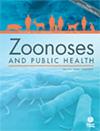Toxoplasma gondii is a very common zoonotic parasite in humans and animals worldwide. Human seroprevalence is high in some regions of Canada's North and is thought to be associated with the consumption of traditionally prepared country foods, such as caribou, walrus, ringed seal and beluga. While numerous studies have reported on the prevalence of T. gondii in these animals, in the general absence of felid definitive hosts in the North there has been considerable debate regarding the source of infection, particularly in marine mammals. It has been proposed that fish could be involved in this transmission.
The objectives of the present study were to perform a targeted survey to determine the prevalence of T. gondii DNA in various tissues of anadromous Arctic charr sampled in Nunavik, Québec, and to investigate the possible role of this commonly consumed fish in the transmission of infection to humans and marine mammals in Canada's North.
A total of 126 individual Arctic charr were sampled from several sites in Nunavik, and various tissues were tested for the presence of T. gondii DNA using PCR. Overall, 12 out of 126 (9.5%) Arctic charr tested in the present study were PCR-positive, as confirmed by DNA sequencing. Brain tissue was most commonly found to be positive, followed by heart tissue, while none of the dorsal muscle samples tested were positive.
Although the presence of T. gondii DNA in brain and heart tissues of Arctic charr is very intriguing, infection in these fish, and their possible role in the transmission of this parasite to humans and marine mammals, will need to be confirmed using mouse bioassays. Arctic charr are likely exposed to T. gondii through the ingestion of oocysts transported by surface water and ocean currents from more southerly regions where the definitive felid hosts are more abundant. If infection in Arctic charr can be confirmed, it is possible that these fish could play an important role in the transmission of toxoplasmosis to Inuit, either directly through the consumption of raw fish or indirectly through the infection of fish-eating marine mammals harvested as country foods.



